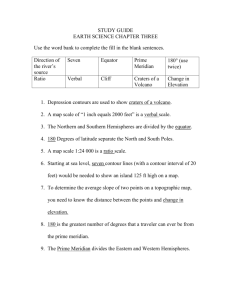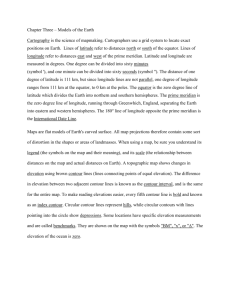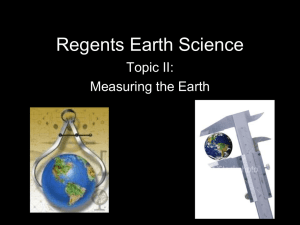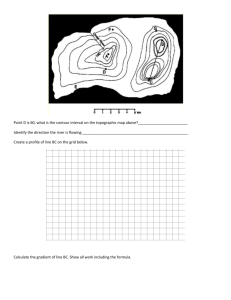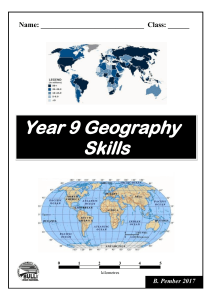Unit 1 Review PowerPoint
advertisement
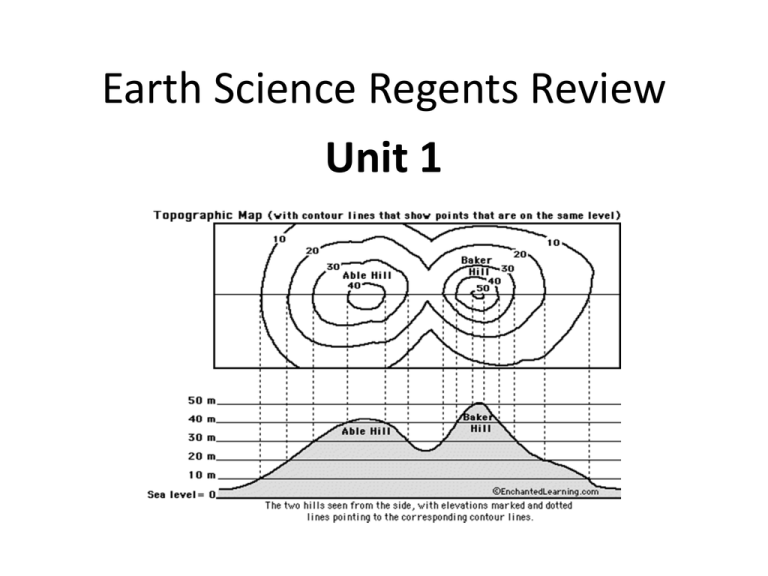
Earth Science Regents Review Unit 1 _________________ __________________ Parallel Lines lines Run east to west Measures distances north or south Reference line is the equator A.k.a. parallels 0-90o that meet at the poles Run north to south Measures distances east or west Reference line is the prime meridian A.k.a. meridians 0-180o 3) What is the North Star? How is it used in navigation? The altitude of Polaris is equal to the latitude. What is the international date line? It is the 180 degree line of longitude that separates the eastern and western hemispheres. Summary: What is the latitude for these locations? Aim: How do we break down degrees into minutes? Aim: How do we break down degrees into minutes? 1) How fast does the earth spin? The earth does one 360 degree spin every 24 hours so: 360 degrees/ 24 hours= 15 degrees/hour 3) What is Greenwich Mean Time? This is the time on the prime meridian where all of the world sets its time Why is California three hours behind us? 4) If you are west of the Prime Meridian your time is ____________, but if you are east then your time is ______________ because________ _______________________________ ___________________________. 5) How do we find longitude using difference in time? Step 1: Find the difference in time in hours Step 2: Multiply by 15 Step 3: Local time is earlier=West Local time is later=East Contour map (same as topographic map) Contour line Gradient Contour interval Profile The elevation increases inside of the line. Subtract two contour index lines and divide by the number of hops. Connect into a circle Touch the edge of the map Figure out the value of the next line then subtract 1. Look at the lowest adjacent line then add 1. Contour lines bend upstream. The river flows opposite the point of the bend. The closer the contour lines, the steeper the gradient. Higher elevations The point of the “V” points up They show a hole or depression One point can’t have TWO elevations. Change in field value/Distance If the land changed from a height of 50 m to a height of 150 m over a distance of 25 km what is the gradient? 150 m – 50 m/25 km 100 m / 25 km 4.0 m/km

